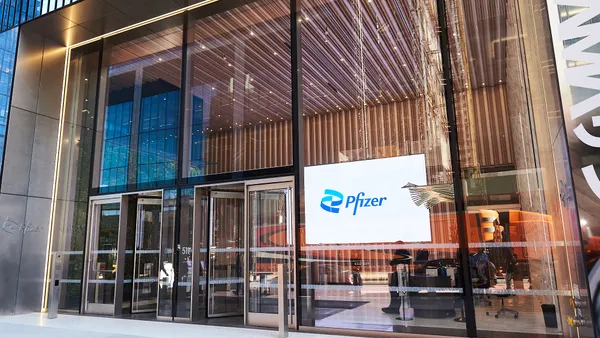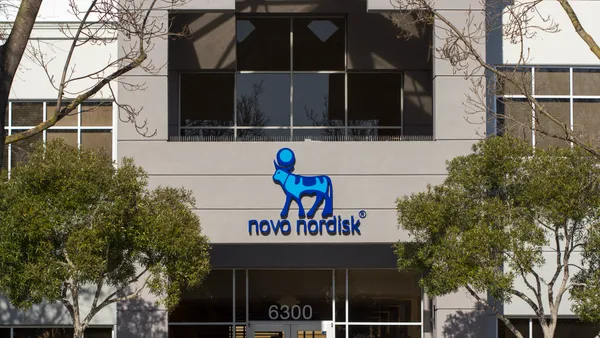Sustaining Measured Brand Performance and Training Efforts Steve Callender Senior Consultant, Performance Improvement Evaluation Metrics Measuring the results of sales performance improvement efforts using a solid, best-practice approach can demonstrate and ensure the effectiveness of the whole effort, which in these changing times is more important than ever. In the life-sciences arena, for years the focus of measurement has been on the actual prescribing data and behavior of physicians. With the Prescribing Data Restriction Program (PDRP) in place, however, physicians have the choice to withhold their personal prescribing data from sales representatives and managers, which could restrict access to this market intelligence. Without the data to link an individual salesperson’s efforts with documented prescribing behavior, it will be critically important to find other ways to measure representative behavior. A systematic process to link sales performance improvement efforts with changed behavior and results can make a difference in training, marketing, and sales strategies in the life sciences. Executing sales performance improvement efforts using an impact evaluation process to measure effectiveness allows sales, marketing, and training executives to collect the rich data to tell whether skill development actually takes place, what difference it makes, and how to optimize or continue the change. It is essential to assess behavior and outcomes and to measure those unobtrusively. Following up with measurement at the right time, and using the documented results to guide further improvements, can support training and development investment and efforts. What Accountable Change Needs to be Measured? With increased competition between products in the same therapeutic category and changes in state and federal regulations, healthcare providers and institutions are being forced to differentiate life-sciences companies based on added business value. Sales leadership has a responsibility to lead change and share accountability. They need to reinforce by encouraging representatives to learn what customers really value, coach to support these efforts, and then establish mutual accountability for ever-improving execution. Representatives will own the role of trusted advisor with physicians and other healthcare providers. Performance improvement comes when representatives have mastered the skills that impact certain key elements. The Right Relationship Developing a powerful relationship with healthcare providers is one of the most effective approaches to securing customer loyalty. If it is clear to healthcare providers that representatives believe in the brand and demonstrate a sense of ownership by sharing all of the most important information critical to both the physician and the patient, they perceive superior value. The goal is to bring value to every call. Stronger prescriber relationships will be a key ingredient to competitive advantage in the years ahead. The critical skills for the representative are to earn trust, find commonality, and build credibility. A Differentiated Message The message and support materials should link to the needs identified by each customer. Even though healthcare providers place an emphasis on clinical data, they also connect emotionally. Their level of commitment is based on their total experience with the representative, organization, and the brand. The critical skills to position the right message are those that take an integrated approach to using technical skills and interpersonal skills to focus and guide the delivery. The Right Execution When executing the sales strategy, customizing the approach and aligning to a healthcare providers’ style must be considered to ensure the impact and relevance of the message, and it has to link to what is important to them in ways they want to hear it. Influencing healthcare providers’ behaviors and prescribing habits enables representatives to make a true difference in delivering value. Application-based case studies and simulations within training let representatives become poised in their presentation of this information. Measuring The Impact It is critical to measure the impact of sales effectiveness efforts, including building relationships and executing the right message to ensure that processes used to develop sales strategy, skills, and execution bring the intended results. Some organizations already have a disciplined approach that keeps their sales performance improvement efforts on track, but most do not. A survey by ES Research of sales organizations across industries, found that fewer than 40% had a reliable process to measure the impact of sales performance improvement. Measuring the results of sales performance improvement efforts using a solid, best-practice approach can demonstrate and ensure the effectiveness of the whole effort, which in these changing times is more important than ever. Wilson Learning Corp., Edina, Minn., provides human performance improvement solutions for Fortune 500 and emerging corporations, with operations in the United States and 30 other countries. For more information, visit wilsonlearning.com. May 2007 VIEW on Sales Training
An article from


Sustaining Measured Brand Performance and Training Efforts
Filed Under:
Commercialization








